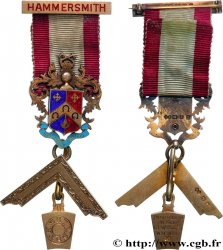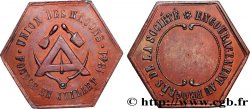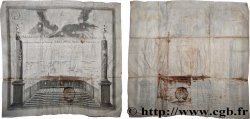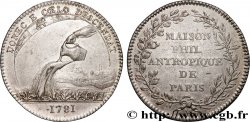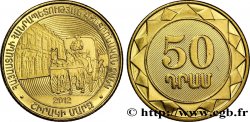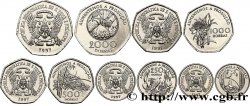E-auction 511-423521 - fjt_755206 - FRANC-MAÇONNERIE - PARIS GRANDE LOGE DE FRANCE 1994
Devi Sign-in ed essere un offerente approvato fare un'offerta, Login per fare offerte. Conti sono soggetti ad approvazione e di approvazione sono raggiunti entro 48 ore. Non aspettare fino al giorno di una vendita si chiude per registrarti.Confermando la tua offerta su questo oggetto ti impegni ad un contratto legalmente vincolante per l'acquisto di questo prodotto e fare clic su «offerta» costituisce accettazione dei termini di utilizzo de e-auctions cgb.fr.
Offerta deve essere collocato in euro gli importi interi vendita only.The si chiuderà al momento sulla descrizione dell'oggetto, eventuali offerte pervenute al sito dopo l'orario di chiusura non verranno eseguite. Volte transmition possono variare e le offerte potrebbero essere respinto se si attende per gli ultimi secondi. Per ulteriori informazioni ckeck le FAQ.
SENZA COSTI PER GLI ACQUIRENTI.
SENZA COSTI PER GLI ACQUIRENTI.
| Valutazione : | 20 € |
| Prezzo : | 14 € |
| Offerta maxima : | 14 € |
| Data di fine vendita : | 30 gennaio 2023 19:23:30 |
| partecipanti : | 4 partecipanti |
Tipo : GRANDE LOGE DE FRANCE
Data: 1994
Nome della officina / città: PARIS
Metallo : ottone
Diametro : 29,5 mm
Asse di coniazione : 12 h.
Peso : 10,97 g.
Orlo : lisse
Marchio : corne
N° nelle opere di riferimento :
Diritto
Titolatura diritto : GRANDE LOGE DE FRANCE R.:. E.:. A.:. A.:..
Descrittivo diritto : Équerre posée sur un compas , au centre un G.
Rovescio
Titolatura rovescio : GRANDE LOGE DE FRANCE 1894 - 1994 (CORNE D’ABONDANCE - ROSETTE DE L’ATELIER DE GRAVURE).
Descrittivo rovescio : Oeil dans un triangle rayonnant.
Commento
Le centenaire s’explique car en 1894, le Suprême Conseil du Rite Écossais Ancien et Accepté délègue ses pouvoirs sur les trois premiers degrés à la Grande Loge de France ( G.L.F.).
Le centenaire avait d’autant plus d’importance qu’en 1965, devant le refus de la G.L.F. de rompre ses relations avec le Grand Orient (G.O.), un millier de Frères quittèrent la G.L.F dite Puteaux et rejoignent la Grande Loge Nationale Française (G.L.N.F.), dite Bineau, de son ancienne adresse.
Le métal est indéterminé, d’aspect nickelé mais non magnétique, la fabrication est soignée et provient de la Monnaie de Paris qui a signé de la rosette. La tranche est lisse.
La franc-maçonnerie s’implante en France aux alentours du premier quart du XVIIIe s. sous l’influence d’aristocrates anglais. Initiatique, elle est fondée sur le rite hiramique, du nom d’Hiram de Tyr, personnage biblique, architecte du roi Salomon sur le chantier du Temple et qui a résisté à la torture sans livrer ses secrets. Hiram a aussi donné un point de départ du calendrier maçonnique commençant 4000 ans avant le calendrier chrétien. Les symboles servent de signes de reconnaissance entre les initiés, notamment des outils de constructeur de cathédrales (équerre, compas, niveau, maillet, etc.), des formes (triangle, étoile), des nombres (trois, cinq, sept) et des lettres.
The centenary is explained by the fact that in 1894, the Supreme Council of the Ancient and Accepted Scottish Rite delegated its powers over the first three degrees to the Grand Lodge of France (G. L. F. ).
The centenary was all the more important in 1965, given the refusal of the G. L. F. to break off relations with the Grand Orient (G. O. ), a thousand Brothers left the G. L. F called Puteaux and join the French National Grand Lodge (G. L. N. F. ), known as Bineau, from her former address.
The metal is undetermined, nickel-plated but non-magnetic, the manufacturing is careful and comes from the Monnaie de Paris which signed with the rosette. The slice is smooth.
Freemasonry was established in France around the first quarter of the 18th century.. under the influence of English aristocrats. Initiatory, it is based on the Hiramic rite, named after Hiram of Tyre, a biblical character, architect of King Solomon on the construction site of the Temple and who resisted torture without revealing his secrets.. Hiram also gave a starting point for the Masonic calendar beginning 4000 years before the Christian calendar. Symbols serve as signs of recognition between initiates, including cathedral builder tools (square, compass, level, mallet, etc.). ), shapes (triangle, star), numbers (three, five, seven) and letters
Le centenaire avait d’autant plus d’importance qu’en 1965, devant le refus de la G.L.F. de rompre ses relations avec le Grand Orient (G.O.), un millier de Frères quittèrent la G.L.F dite Puteaux et rejoignent la Grande Loge Nationale Française (G.L.N.F.), dite Bineau, de son ancienne adresse.
Le métal est indéterminé, d’aspect nickelé mais non magnétique, la fabrication est soignée et provient de la Monnaie de Paris qui a signé de la rosette. La tranche est lisse.
La franc-maçonnerie s’implante en France aux alentours du premier quart du XVIIIe s. sous l’influence d’aristocrates anglais. Initiatique, elle est fondée sur le rite hiramique, du nom d’Hiram de Tyr, personnage biblique, architecte du roi Salomon sur le chantier du Temple et qui a résisté à la torture sans livrer ses secrets. Hiram a aussi donné un point de départ du calendrier maçonnique commençant 4000 ans avant le calendrier chrétien. Les symboles servent de signes de reconnaissance entre les initiés, notamment des outils de constructeur de cathédrales (équerre, compas, niveau, maillet, etc.), des formes (triangle, étoile), des nombres (trois, cinq, sept) et des lettres.
The centenary is explained by the fact that in 1894, the Supreme Council of the Ancient and Accepted Scottish Rite delegated its powers over the first three degrees to the Grand Lodge of France (G. L. F. ).
The centenary was all the more important in 1965, given the refusal of the G. L. F. to break off relations with the Grand Orient (G. O. ), a thousand Brothers left the G. L. F called Puteaux and join the French National Grand Lodge (G. L. N. F. ), known as Bineau, from her former address.
The metal is undetermined, nickel-plated but non-magnetic, the manufacturing is careful and comes from the Monnaie de Paris which signed with the rosette. The slice is smooth.
Freemasonry was established in France around the first quarter of the 18th century.. under the influence of English aristocrats. Initiatory, it is based on the Hiramic rite, named after Hiram of Tyre, a biblical character, architect of King Solomon on the construction site of the Temple and who resisted torture without revealing his secrets.. Hiram also gave a starting point for the Masonic calendar beginning 4000 years before the Christian calendar. Symbols serve as signs of recognition between initiates, including cathedral builder tools (square, compass, level, mallet, etc.). ), shapes (triangle, star), numbers (three, five, seven) and letters








 Segnalare un errore
Segnalare un errore Stampate la pagina
Stampate la pagina Condividi mia selezione
Condividi mia selezione Fai una domanda
Fai una domanda Consegnare / vendere
Consegnare / vendere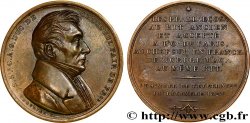
 Descrittivo
Descrittivo